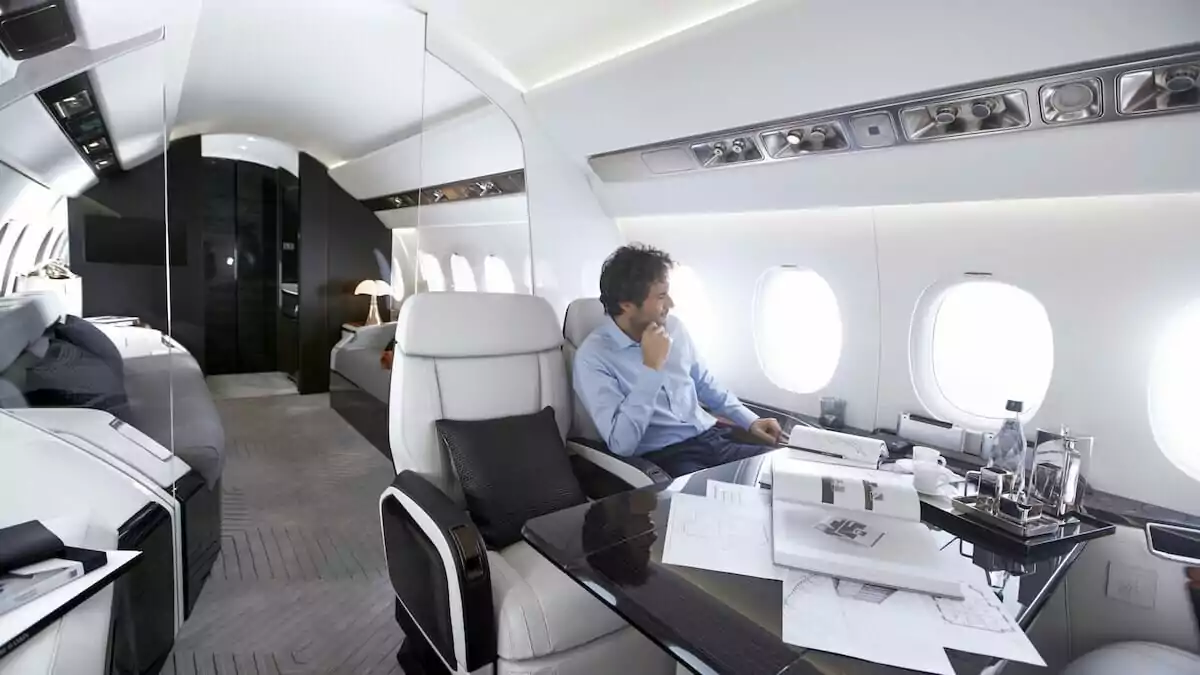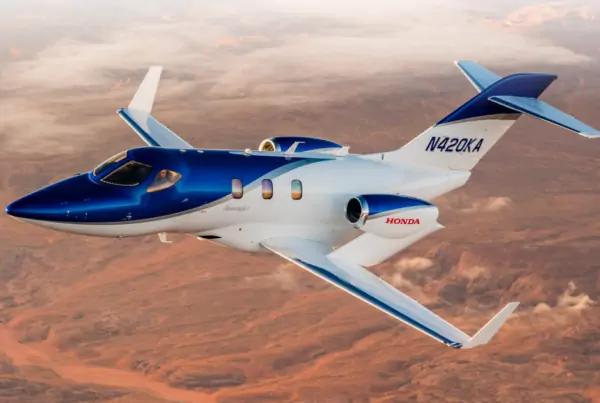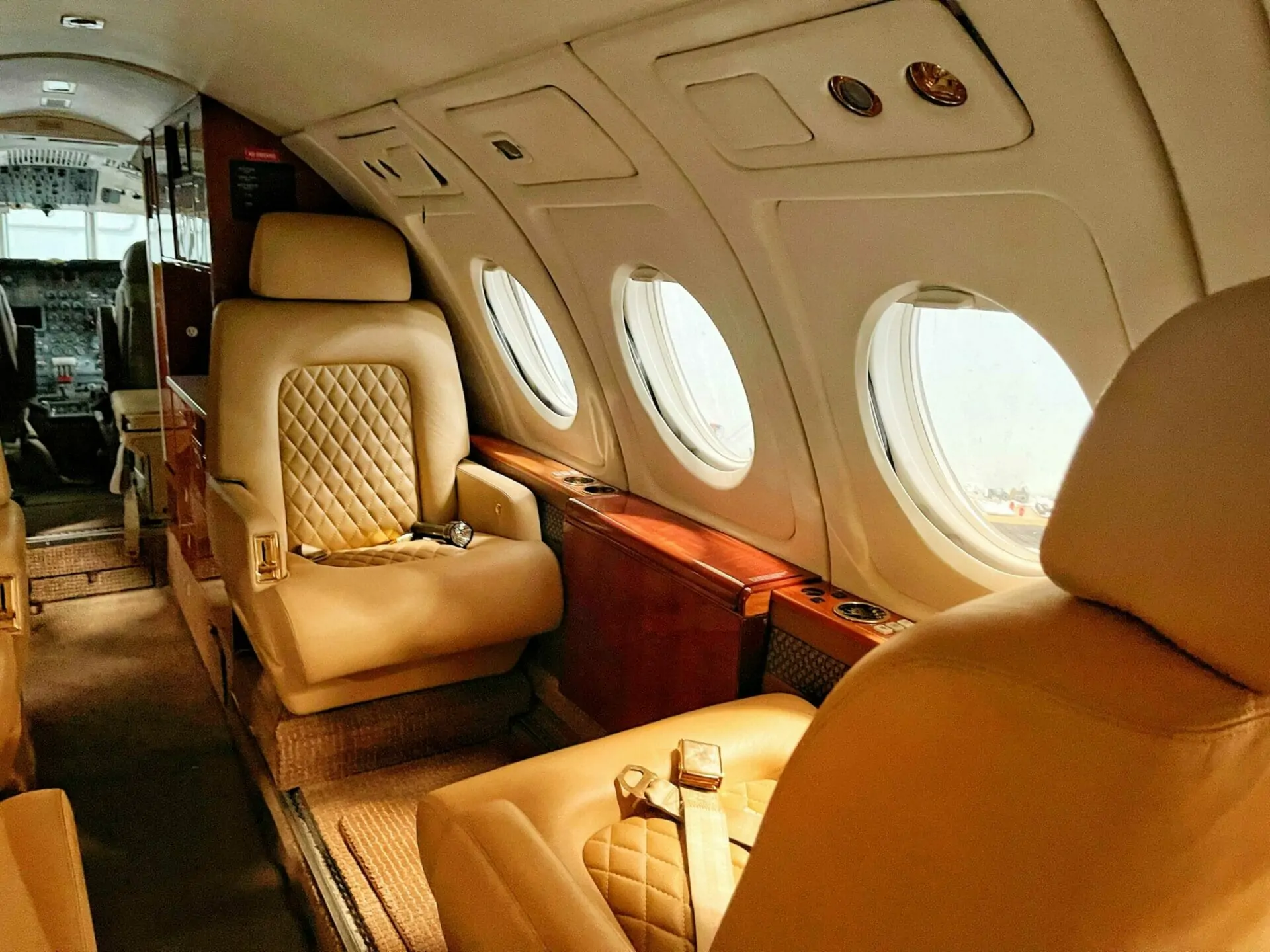Airplane windows have constantly evolved over time.
While they initially may seem mundane and common on all aircraft – from commercial airliners to private jets, military aircraft to helicopters – there is a lot of work that goes into providing passengers with outstanding views of the world below.
When thinking about private jet windows it is important to consider the overall history, the requirements for a safe window, the benefits, private jets with notable windows, and the future technology.
History of Airplane Windows
Airplane windows as we know them today can trace their roots back to the de Havilland DH 106 Comet.
The 1950s were the beginning of the jet age. And with the jet age came cabin pressurization.
Aircraft were flying higher and faster. As a result, there was an increase in the pressure differential between the inside of the aircraft and the outside.
Originally the de Havilland Comet had square windows.
However, three incidents between 1953 and 1954 were caused due to the square windows. The pressure would build up in the corners of the windows and cause stress build-up during flights.
Two of these Comet aircraft completely broke up during flight.
After the issue had been identified designers created windows to reduce the risk of stress build up on the windows, leading to the more circular design as we know it today.
Private jets also followed suit by rounding off the corners of the windows to reduce the stress build-up.
Additionally, private jet windows are not made from glass. Rather, they are made from multiple layers and are a form of plexiglass.
This is required to withstand the immense pressures that the aircraft fuselage and windows experience.
Types of Private Jet Windows
There are two main types of private jet windows that you will come across, round and rectangular (albeit not with sharp corners).
The majority of private jets feature a more rectangular design.
All aircraft manufacturers have their own unique window designs.
This is because it is quite hard to differentiate aircraft design given the constraints of aerodynamics.
Therefore, by having a unique design it is possible to make it more recognizable.
This is where Gulfstream has done extremely well with their distinctive oval design windows.
Gulfstream is famous for its window design which is not only oval but also extremely large.

Therefore, you will always be able to identify a Gulfstream aircraft just by the windows that it carries.
However, including larger windows is challenging.
The larger the window the less structural integrity the aircraft will have.
Essentially each window is the hole in the fuselage. Yes, it is securely sealed but it is still a hole nonetheless.
A plexiglass window will not carry the same structural integrity as aluminum.
Moreover, in order to secure the windows there has to be more material around the window itself which therefore increases the weight of the aircraft. And more weight equals higher fuel burn, less range, and less performance in general.
In terms of number of windows, this varies greatly depending on the size of the aircraft.
Some small jets will have a handful of windows, with aircraft like the Cessna Citation Mustang having just 6 windows (excluding the cockpit windows).
On the other hand, larger jets will usually have upwards of 20 windows, with an aircraft like the Global 7500 having nearly 30.
Benefits of Aircraft Windows
One of the key benefits that comes with private jet windows is the natural light that floods the cabin.
Natural light comes with significant benefits for humans. This is also true when traveling in regard to the circadian rhythm of the human body.
This is why manufacturers have regularly tried to enhance the lighting system on aircraft to help with the passenger’s circadian rhythm to minimize the effects of jet lag.
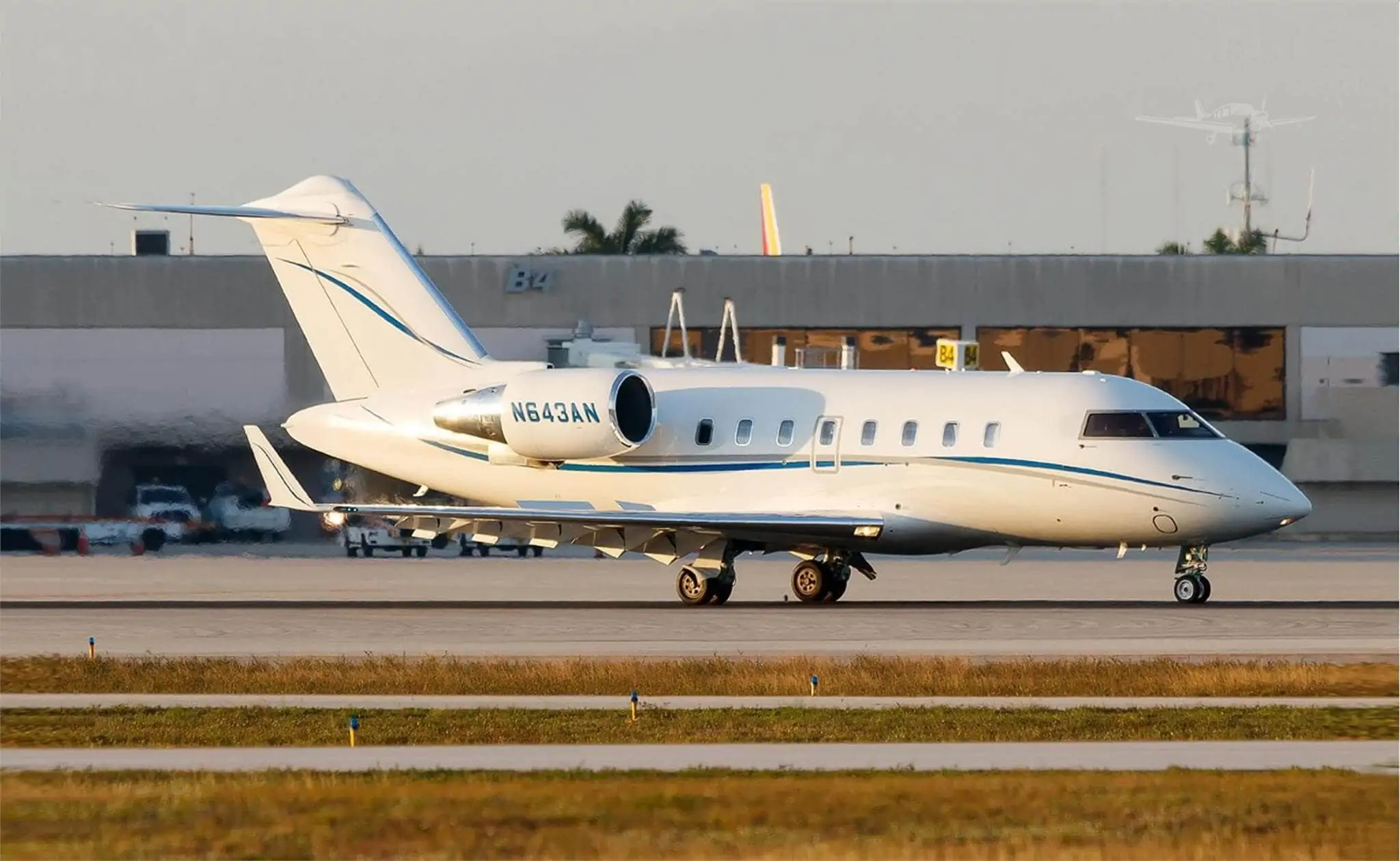
For example, Bombardier has put a huge amount of development work into their Soleil Lighting System.
Another benefit of private jet windows is simply looking out of them to enjoy the beauty of the world below.
There is also the added safety benefit.
There is a reason that it is important to keep the window shade open during take-off and landing.
This is so that should there be an emergency you are aware of your surroundings outside of the aircraft.
Private Jets with Notable Windows
There are a few private jets that have notable windows.
Firstly, the HondaJet is cited as having notable windows thanks to its dimmable function.
These windows allow the passenger to control the tint of the windows from a touch panel on the window, a control panel, or a wireless tablet.
Additionally, these windows can adjust automatically thanks to light sensors for complete automatic operation.
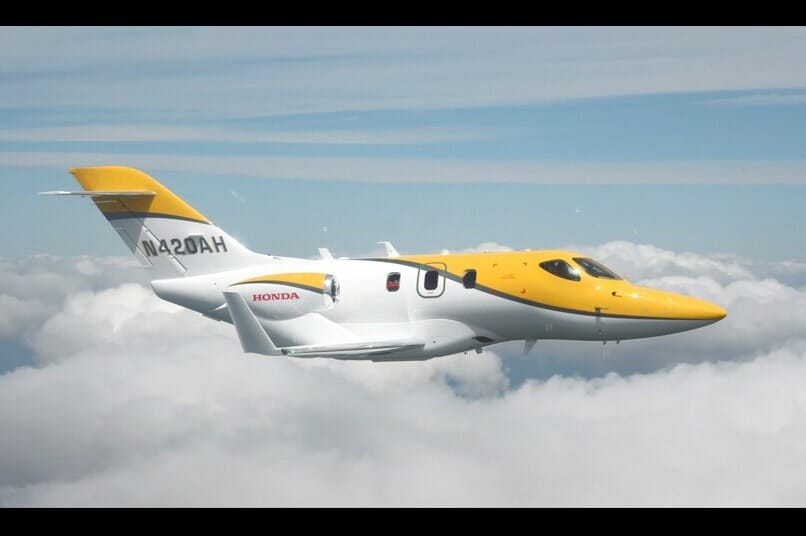
Second, the Gulfstream family of aircraft. Gulfstream aircraft have a distinct design, allow in a large amount of light, and look cool.
You will always know a Gulfstream when you see it thanks to its distinctive windows.

Third, the Dassault Falcon 6X.
The Falcon 6X is the latest aircraft from Dassault and not only features 30 regular cabin windows but also a skylight.
A skylight is quite unusual with private jets.
It is perfectly positioned above the galley to flood it with light. This is typically a section of the cabin that would have to use artificial light, therefore, the skylight enhances the overall light in the front of the cabin.
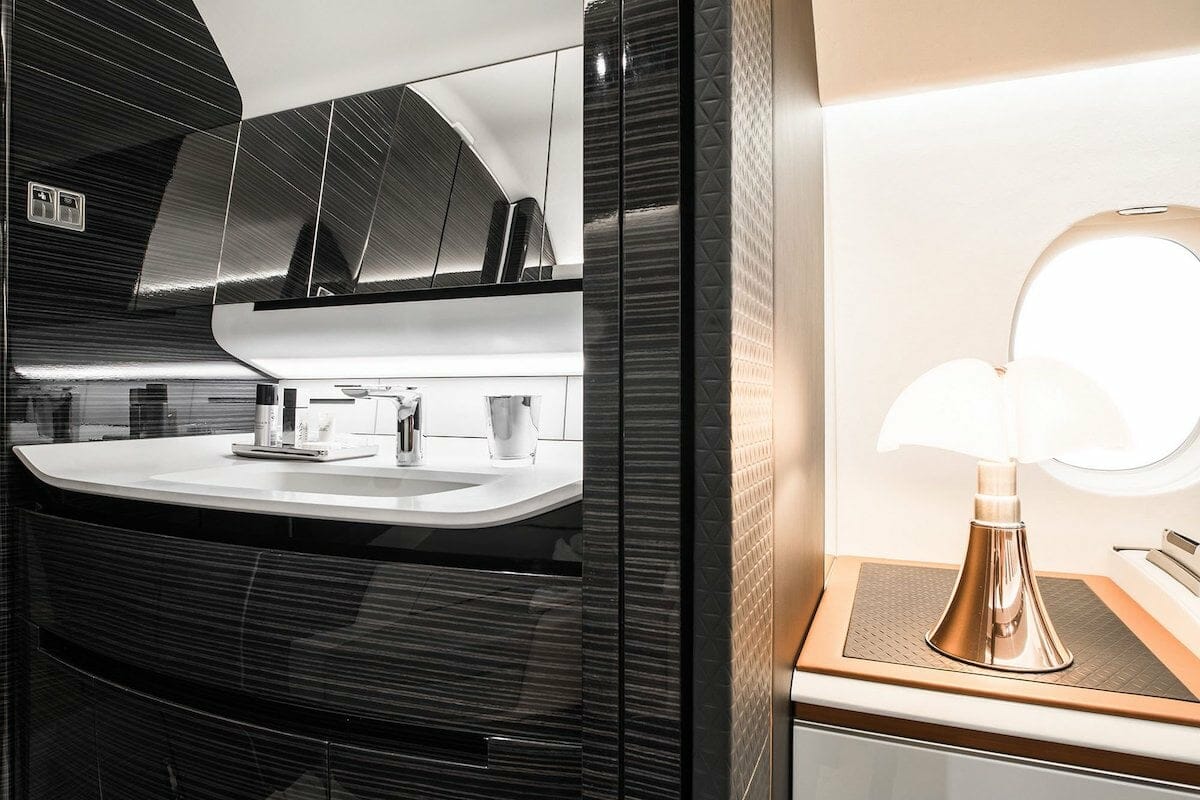
Future Private Jet Window Technology
Despite there being limits to what you can do with private jet windows, there are a couple of interesting things going on with them.
Windows will likely get bigger over time as technology improves and customers desire more natural light – such as with the Falcon 6X.
Additionally, the future technology will likely be the self-tint windows seen on the HondaJet aircraft.
This is a feature that will allow the cabin management system to better manage the cabin light to ensure it is always optimum.
Additionally, the Nuance V2 technology claims that having dimmable windows up to 30% of the weight can be saved versus having the typical motorized shades.
The other technology is potentially no windows at all. Rather, have cameras that provide a live image feed of the world outside.
This would also reduce weight while hopefully providing passengers with a view of the outside.
However, this seems relatively unlikely to make its way into popular aircraft. This is because having natural light is crucial to make the cabin feel extra spacious.
Live camera feeds are unlikely to be able to replicate the natural light that comes with having actual windows.
Even if a passenger isn’t actively looking out of the window they are still receiving the benefit from them of the natural light flooding the cabin.




